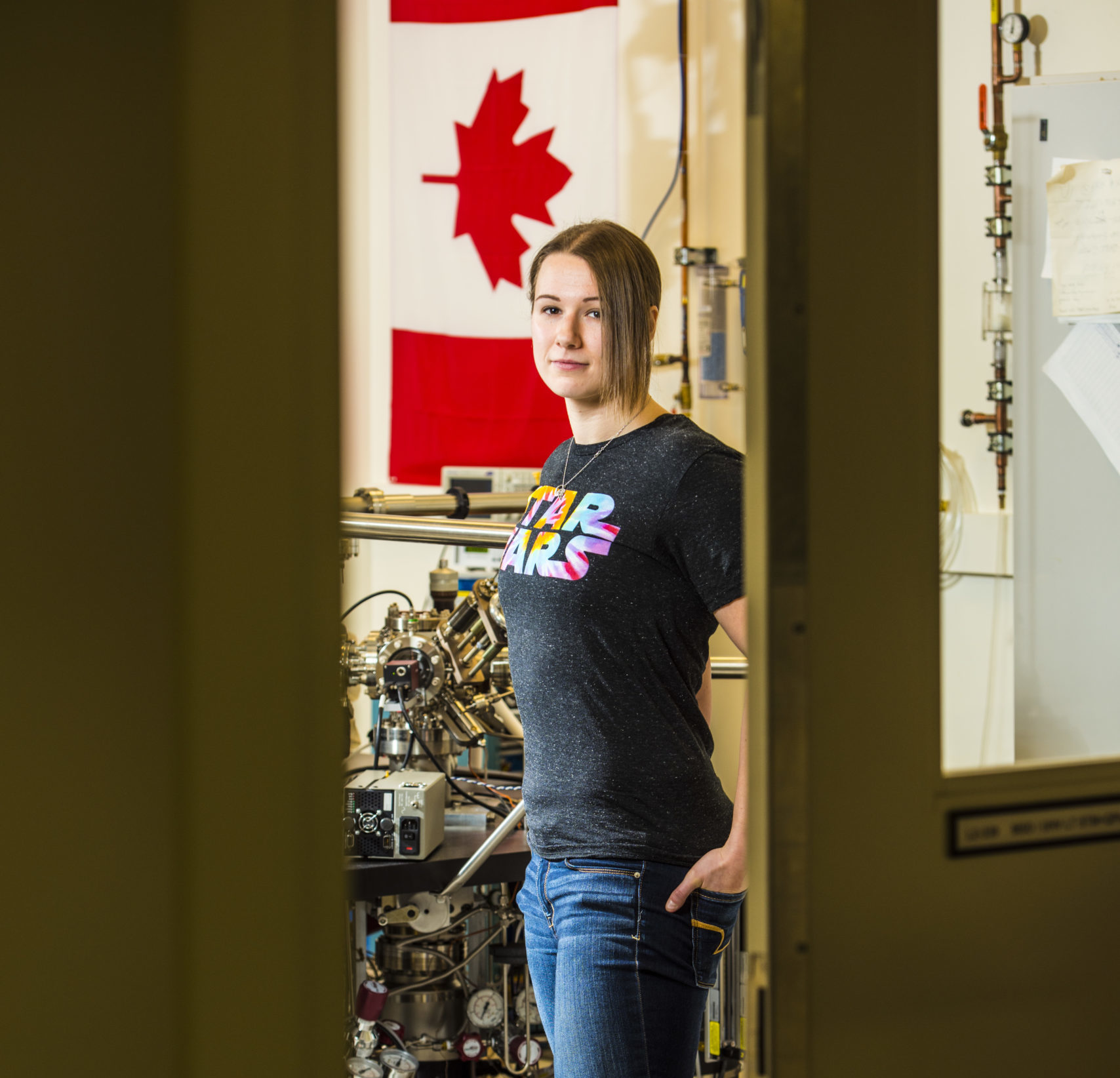Huff’s doctoral research at the University of Alberta could enable a new system architecture for information storage and computation that is based on atom-sized building blocks.
For her Master’s degree and her PhD, Huff worked with Robert Wolkow, iCORE Chair in Atom Scale Information at the U of A. She focused on what they came to call “Atomic White-Out,” an error correction method for fabricating and patterning quantum dots. The technique gave Huff and the team the ability to successfully build atomic circuits. She was able to construct binary atomic wires and logic gates.
For years, researchers have known that miniature circuitry built atom by atom could provide a new basis for electronic devices that are far more energy efficient, faster, and smaller than what is available today. But progress has been stalled because of lithographic patterning errors. Huff’s work enabled error-free atomic circuity based on quantum dots to be built for the first time.
“We had this big, fancy machine that was designed to move atoms using what’s called scanning tunnelling microscopy. I wanted to add this new technique which the machine was equipped for, but nobody had really done. It was called atomic force microscopy, said Huff.
“Every single atom that you have on a surface has forces that come off it. So what we do is we bring in a really tiny finger to read the `Braille’ of the forces.”
She and her colleagues encoded the binary 0’s and 1’s of computer language in the spatial position of single electrons in quantum dot pairs, instead of in conventional transistors. Pairs can be electrostatically “linked” together to build full computer circuits, says Huff. They called this approach Binary Atomic Silicon Logic (BASiL)
“The advantage of BASiL over traditional transistors is that they can operate 100 times faster, use 100 times less energy, and are incredibly tiny”
Think of quantum dots like buckets with a hose connecting them, says Huff, and the electron is like water filling the bucket.
If you lift the left bucket by its handle, the water will slosh to the lower-in-height right bucket. A BASiL pair works just like this, but instead of physically lifting the quantum dot, we use an input electrostatic field to coerce the electron to quantum mechanically tunnel into either the left or right “bucket.”
“The advantage of BASiL over traditional transistors is that they can operate 100 times faster, use 100 times less energy, and are incredibly tiny; a transistor-equivalent quantum-dot pair is only two atoms in size,” says Huff.
Wolkow says Huff’s paper on BASiL demonstrates the smallest, most efficient and fastest circuit elements known.
Quantum Silicon Incorporated, a Canadian company based in Edmonton, is working to bring the patented technology to market.
Huff and her fellow PhD graduate, Roshan Achal, also used the technology to make a 32-atom “world’s smallest maple leaf” for Canada’ 150th anniversary in 2017.
She recently moved to Ottawa to work at the Canadian Bank Note Company, where she continues what she describes as “incredibly exciting” research.
The Colton Medal recognizes excellence in research leading to new understanding and novel developments in microsystems and related technologies. It comes with a cash prize of $4,500.
February 2022
Photo credit: © John, Ulan, University of Alberta

